Easter Rising: 250,000 people attend largest public event in Ireland's history to commemorate fallen leaders
People line the streets of Dublin for military parade to mark centenary of the insurrection against British rule
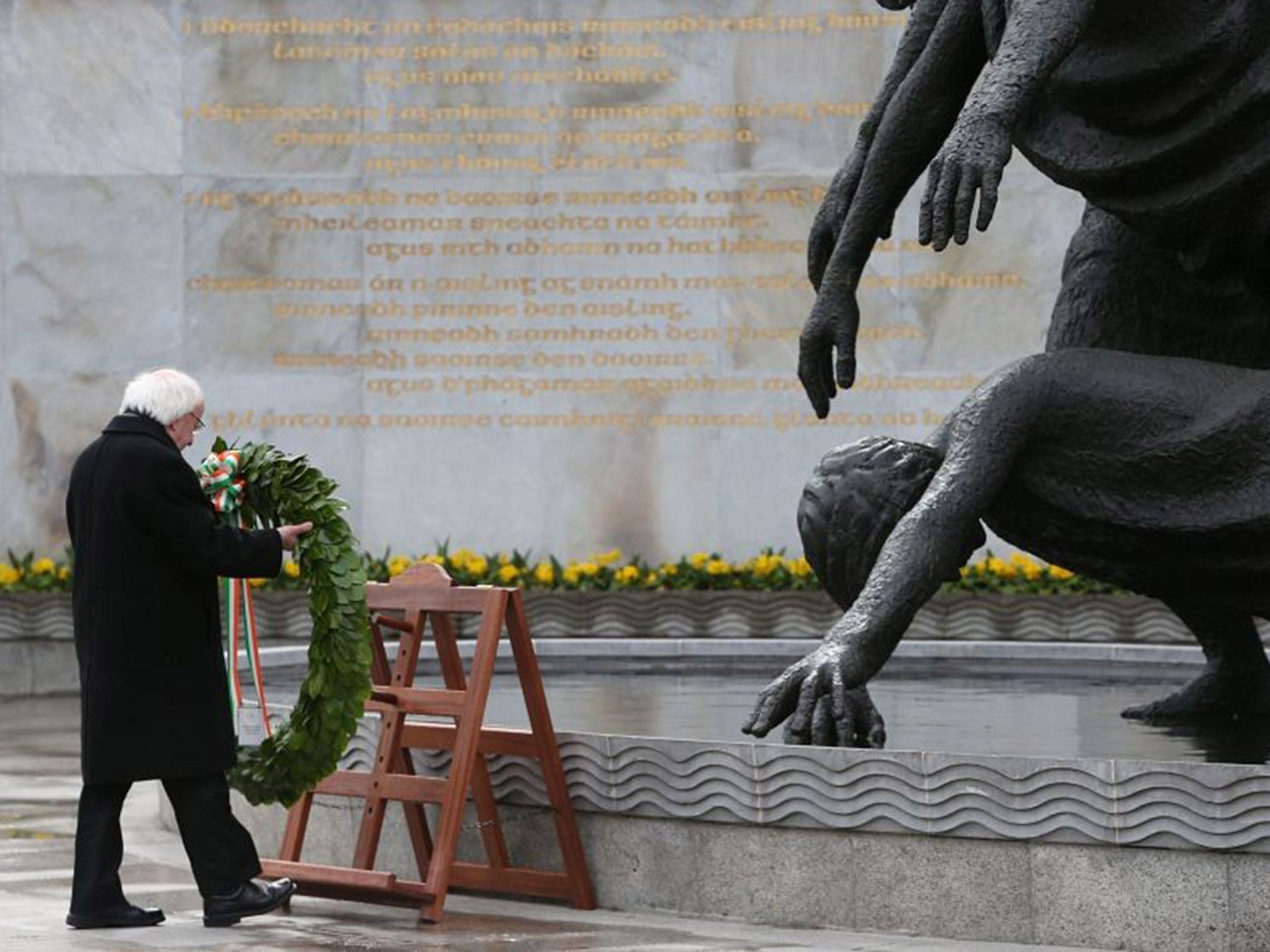
Your support helps us to tell the story
From reproductive rights to climate change to Big Tech, The Independent is on the ground when the story is developing. Whether it's investigating the financials of Elon Musk's pro-Trump PAC or producing our latest documentary, 'The A Word', which shines a light on the American women fighting for reproductive rights, we know how important it is to parse out the facts from the messaging.
At such a critical moment in US history, we need reporters on the ground. Your donation allows us to keep sending journalists to speak to both sides of the story.
The Independent is trusted by Americans across the entire political spectrum. And unlike many other quality news outlets, we choose not to lock Americans out of our reporting and analysis with paywalls. We believe quality journalism should be available to everyone, paid for by those who can afford it.
Your support makes all the difference.Thousands of soldiers have marched solemnly through the crowded streets of Dublin to commemorate the 100th anniversary of Ireland's Easter Rising against Britain, a fateful rebellion that reduced parts of the capital to ruins and fired the country's flame of independence.
Around 250,000 people turned out to see the Easter parade through Dublin featured military ceremonies at key buildings seized in 1916, when about 1,200 rebels sought to fuel a popular revolt against Ireland's place in the United Kingdom.
The five-hour procession paused at noon outside the colonnaded General Post Office on O'Connell Street, the rebel headquarters a century ago, where commander Padraig Pearse formally launched the revolt by proclaiming to bemused Dubliners the creation of a "provisional" Republic of Ireland.
A soldier in today's Irish Defence Forces, Capt. Peter Kelleher, stood in front of the restored post office Sunday to read the full, florid text of Pearse's 1916 proclamation.
"In the name of God and of the dead generations from which she receives her old tradition of nationhood, Ireland, through us, summons her children to her flag and strikes for her freedom," Kelleher said to an audience that included Ireland's leaders and scores of grandchildren of the rebels.
Many donned their ancestors' Easter Rising bronze service medals, which Ireland issued in 1941 on the rebellion's 25th anniversary.
British forces, among them many Irishmen focused on fighting Germany in World War I, were caught off guard by the seizure of largely unguarded buildings in 1916. Most officers were attending horse races in the Irish countryside. But Britain quickly deployed army reinforcements who were cheered by some locals as they marched into Dublin. Artillery based at Trinity College and a gunboat on the River Liffey which bisects the city shelled the post office and other rebel strongholds, forcing their surrender within six days.
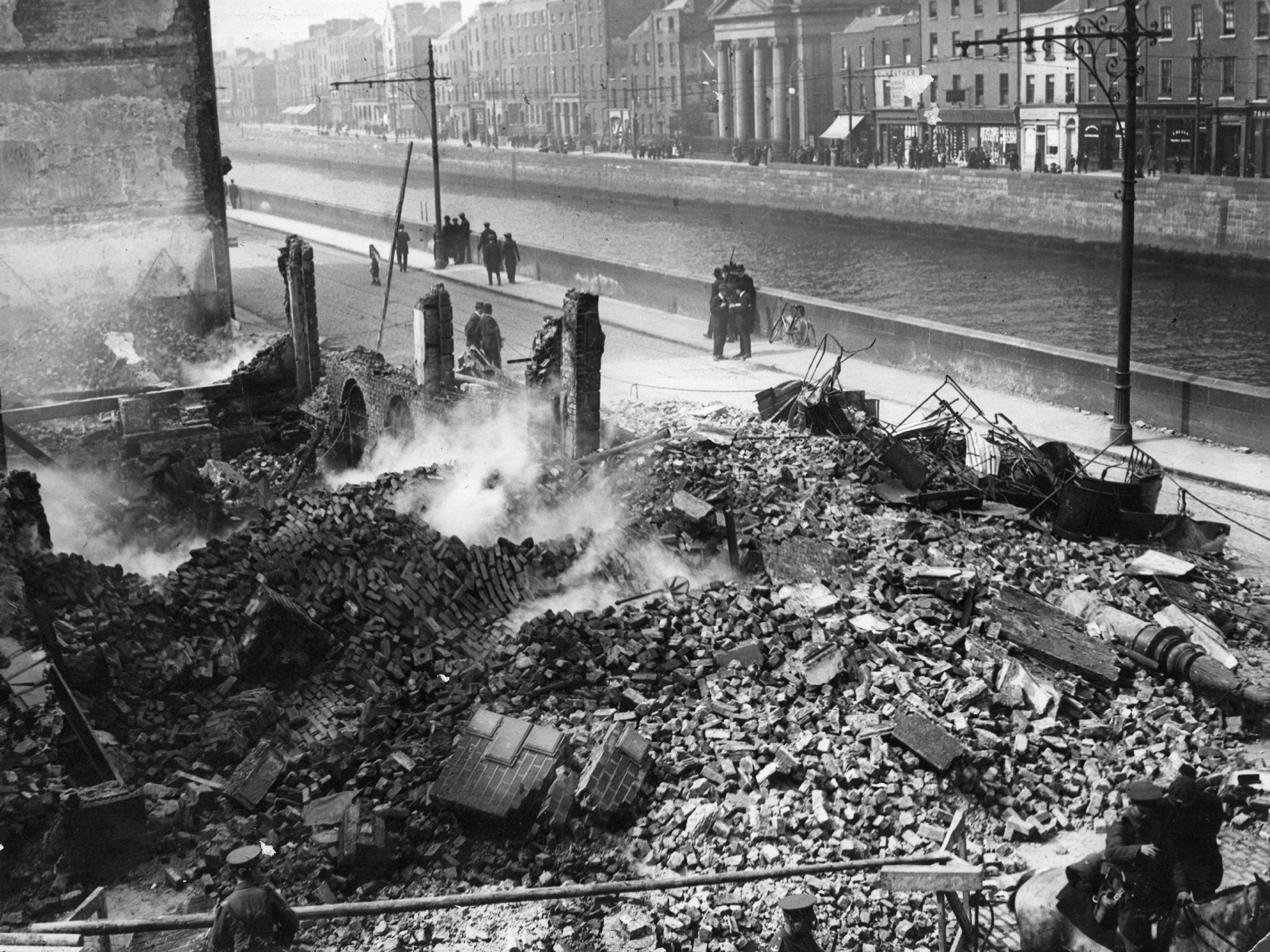
The fighting left nearly 500 dead, most of them civilians caught in the crossfire or shot — by both sides — as suspected looters. Some 126 British soldiers, 82 rebels and 17 police were slain.
Many Dubliners opposed the insurrection as an act of treason in time of war, but public sentiment swiftly swung in the rebels' favor once a newly arrived British Army commander decided to execute Pearse and 14 other rebel leaders by firing squad in Dublin's Kilmainham Jail.
In the morning, President Michael D Higgins has laid a wreath at the spot where 15 rebels were executed for their part in the rebellion against British rule.
In a poignant ceremony at the Stone Breakers' Yard in Dublin's Kilmainham Gaol, the President was flanked by a military guard of honour drawn from the Defence Forces cadet school.
Afterwards, President Higgins arrived by military cavalcade at the General Post Office on O'Connell Street, where the Irish Proclamation was read out by rebel leader Patrick Pearse on Easter Monday 1916.
Acting Taoiseach Enda Kenny invited the head of State to lay a wreath on behalf of the people of Ireland.
"In this centenary year, we honour the memory of those who died in 1916 with the respect and the dignity that is their due and we cherish 100 years later the principles and the ideal contained in our proclamation for which they fought," he said.
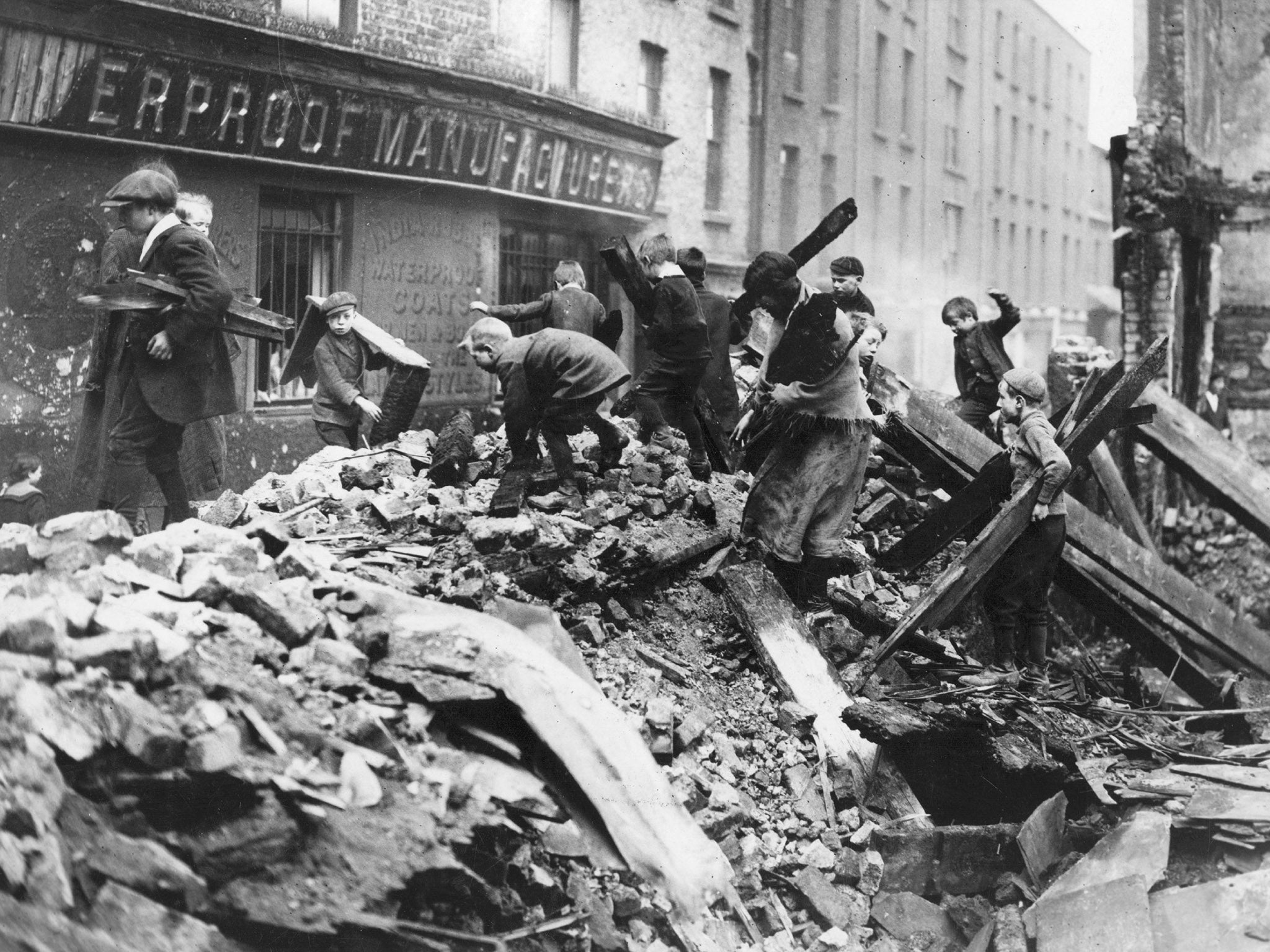
A minute's silence was ended by a muffled drumbeat before The Last Post was sounded and the Irish Tricolour, which flew at half mast throughout the wreath-laying, was hoisted to full mast.
As the Army No 1 band played Reveille and the Irish national anthem Amhran na bhFiann, six Aer Corps aircraft flew 700 feet above the capital's main thoroughfare bellowing smoke in the colours of the national flag.
Despite forecasted rain, the sun shone on the crowds packed into the city centre throughout.
After Captain Peter Kelleher re-enacted the reading of the Proclamation, spontaneous applause erupted from the onlookers.
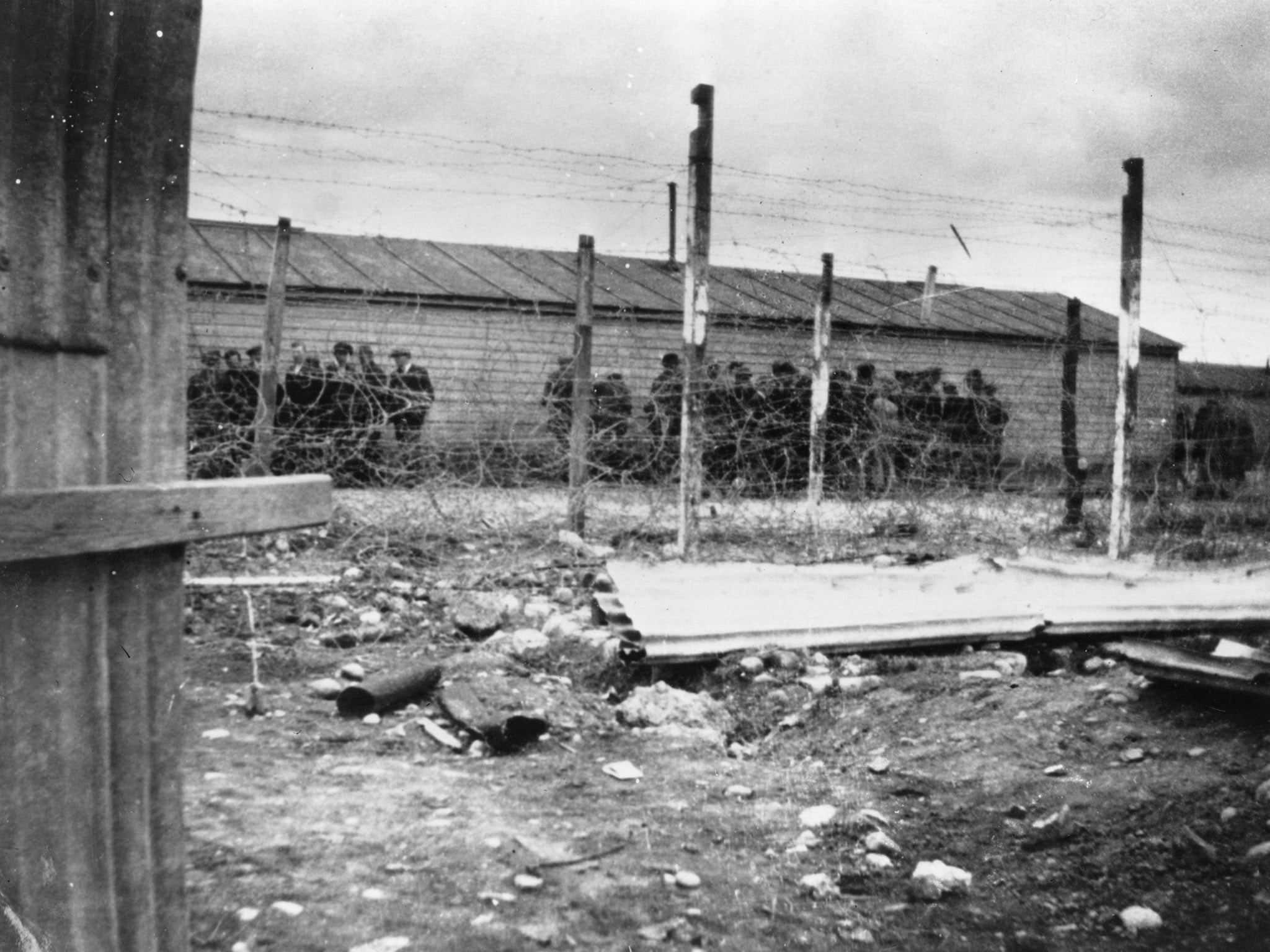
Scores of descendants of the rebels looked on.
The simple ceremony was among the first in a national day of events commemorating the tumultuous insurrection which ultimately led to the partition of Ireland and the creation of the Republic.
Government ministers have been keen to stress that the centenary celebrations are carefully designed to honour the courage and ideals of the Rising and its leaders and reflect all of Ireland's history.
President Higgins used an address to descendants on Saturday to call on Irish people to take responsibility for building a true Republic and said the ideals of the Proclamation can still inspire today.
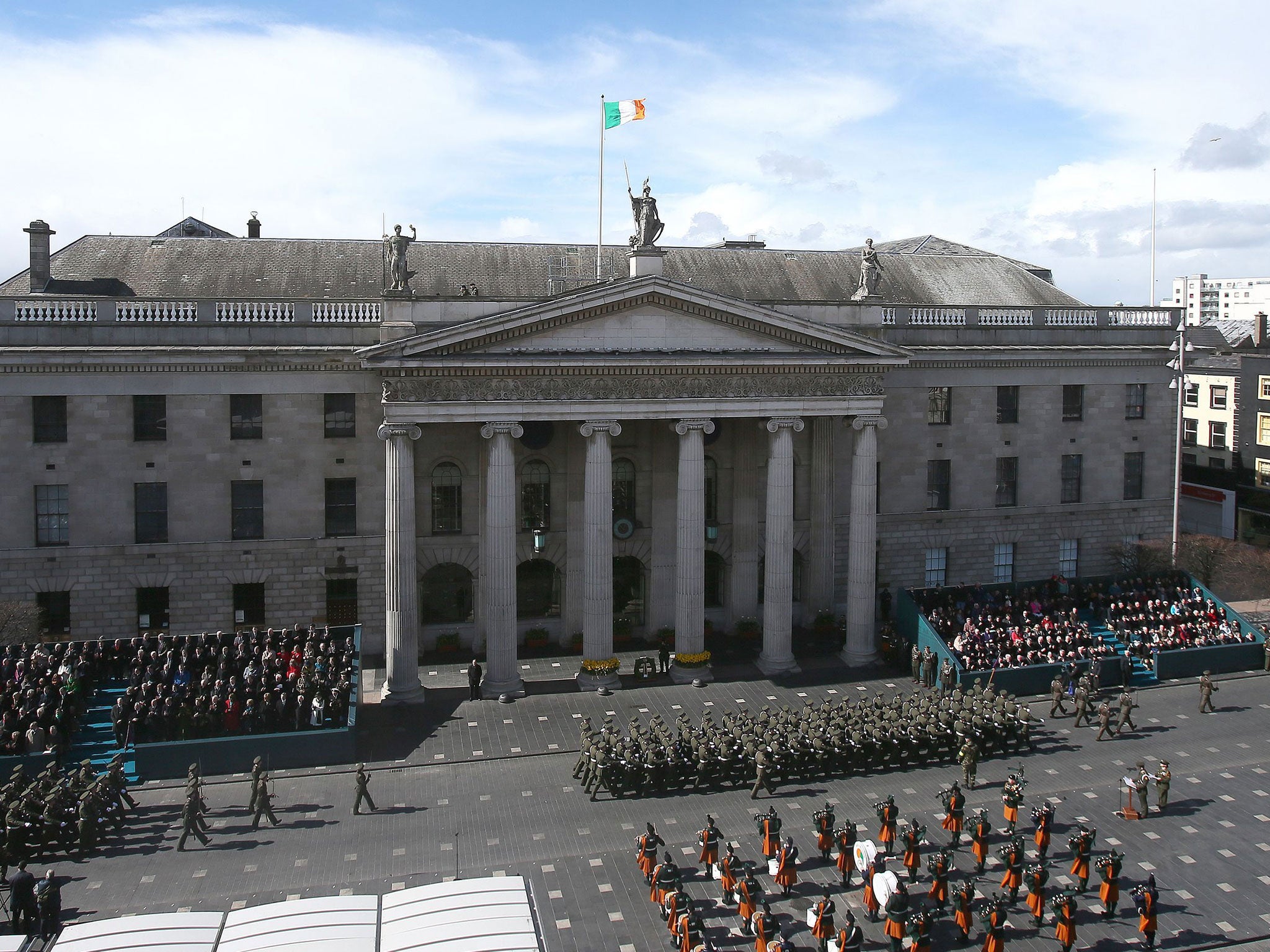
Some 3,722 Defence Forces personnel will march in front of military vehicles along with emergency services personnel and army veterans, many of whom served on United Nations' peacekeeping missions.
The Air Corps also performed a fly past.
The commemorations began on Saturday morning when Sabina Higgins, the President's wife, lays a wreath at the grave of key female revoultionary Countess Constance Markievicz in Glasnevin Cemetery.
Following that, the President laid a wreath in the Garden of Remembrance in honour of all those who fought and died for Ireland's freedom.
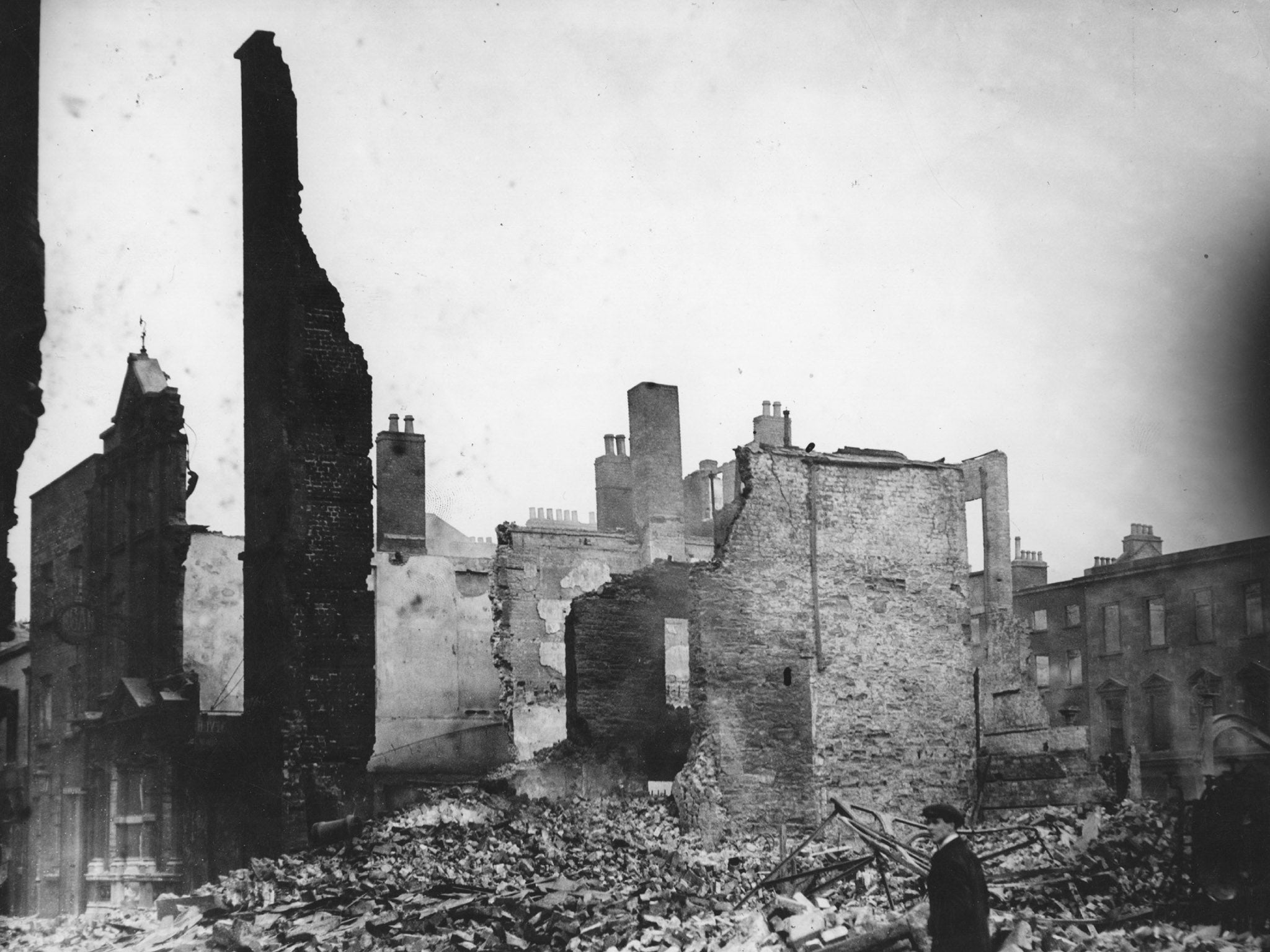
Along the route of the parade 22 viewing screens have been erected and five setback areas are planned for families to congregate.
Organisers have warned of massive demand for public transport and access to the city, but with trams not running due to a strike by Luas workers the capital will be facing unprecedented demand for bus, Dart and taxi use.
The parade ended at around 3pm.
On Easter Monday further commemorations are planned at each of the seven key battlefield sites in Dublin.
Wreath laying ceremonies, again open to the public, will take place at the 1916 garrisons including Boland's Mill, the Jacob's Factory on Bishop Street, Dublin Castle and City Hall, the Four Courts, the Royal College of Surgeons, Moore Street and at St James' Hospital, which was the South Dublin Union 100 years ago.
Outside of Dublin simultaneous wreath laying ceremonies will be held in Athenry, Cork, Enniscorthy and Ashbourne.
Also on Easter Monday cultural events are planned in more than 200 venues across Dublin city centre including 500 free talks, exhibitions, debates, film, performances and dramatisations, with six outdoor stages and lots of activities for children and families.
PA and AP
Join our commenting forum
Join thought-provoking conversations, follow other Independent readers and see their replies
Comments